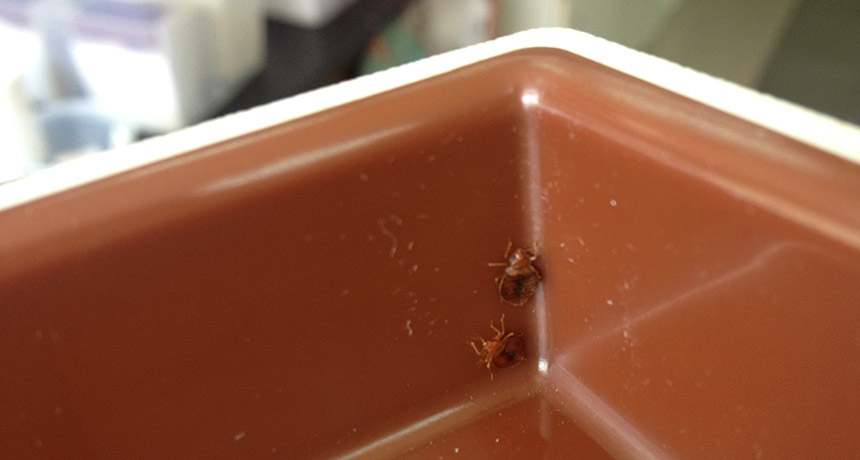Tropical bedbugs outclimb common bedbugs

Some bedbugs are better climbers than others, and the bloodsuckers’ climbing prowess has practical implications.
To detect and monitor bedbugs, people use an array of strategies from DIY setups to dogs. Pitfall traps, which rely on smooth inner walls to prevent escape, are highly effective for detecting and monitoring an infestation. The traps are sold around the world, but they have only been tested with common bedbugs (Cimex lectularius) — the most, well, common species in the United States.
As it turns out, tropical bedbugs (C. hemipterus) can easily scale the walls of pitfall traps, Chow-Yang Lee, an entomologist at Malaysia’s University of Science, and his colleagues found in lab tests. While 24 to 76 percent of tropical bedbug strains escaped traps, only 0 to 2 percent of common strains made it out. In measurements of vertical frictional force, tropical bedbugs also came out on top. Further investigation of the species’ feet revealed extra hairs on the tibial pads of tropical bugs. These may give their legs a better grip on trap walls, the researchers propose March 15 in the Journal of Economic Entomology.
Tropical bedbugs live in some regions of Africa, Australia, Japan, China and Taiwan — and have recently resurfaced in Florida.